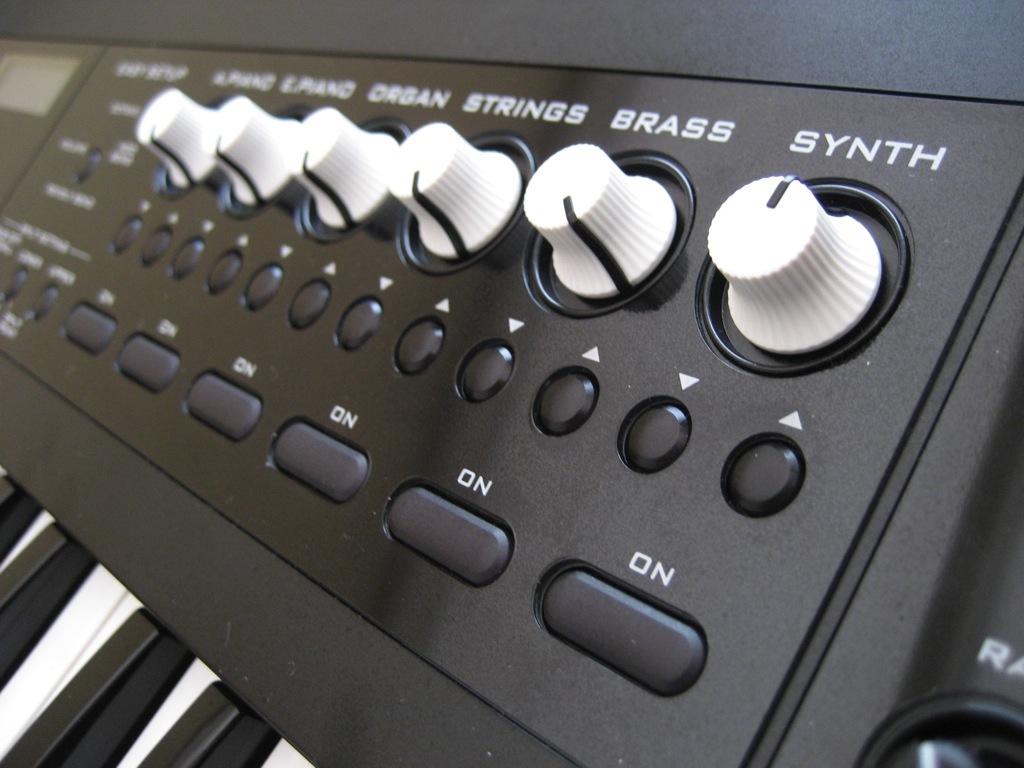
Of all the keyboards I’ve owned, Korg or otherwise, the PS60 is probably the most uniquely performance-oriented keyboard I’ve ever owned. This video does a great job of introducing the PS60 and showing off it’s flexibility for live performance.
In this case, the sounds are based on the M3/M50 family. While the M3 and M50 also share the now-familiar Korg family architecture I mentioned in Part 3 of this series, the PS60 deviates a little from the familiar. But, it’s this deviation that makes the PS60, well, the PS60. The PS60 uses a sound synthesis based on samples taken from the M3/M50 series in a compressed PCM ROM that’s the equivalent of 49 MB at 16 bits/48 kHz. There are 120 voices of polyphony and 12 simultaneous channels of multitimbrality. Unlike other Korgs, the PS60 is always in performance mode. That means that it always uses one or two sets with six sound layers, and each layer includes one of the 512 internal programs. This makes setting up a what we would normally refer to as a combi the natural operating state of the keyboard. And, everything can be easily saved for instant recall.
The realtime performance controls are neatly arranged, although I suppose that if I had my way, what Korg placed on the right, I’d’ve placed on the left and vice versa. I prefer real time controls grouped so I can reach them easily with my left hand. No matter. I still found the PS60 to be a lot of fun to play live because of the ability to set up sounds and mixes of sounds almost instantly.


Deep editing of sounds from the front panel was pretty nearly impossible, but I never really bothered as I found all of the sounds quite usable as delivered.
There was a software editor as well. But because setting up the keyboard in realtime was so simple, I never bothered to load it. But if you take a close look at the editor screen shots, and you’ll notice that some similarities to the Korg family architecture exist in even the PS60’s simplified presentation. And, deep editing of sounds is possible if desired.



PS60s don’t seem to show up on the used market as often as other Korgs for some reason. I don’t know if they were less than stellar sellers when new, or what. A search for sold units on eBay turns up no results, and as of this moment, there’s only one listed for sale there. Results on Reverb.com are similarly bleak if you’re looking to pick one up.
I’ll leave you with this video of someone who can really make a PS60 sing, and next time I’ll discuss the Kross 2.
